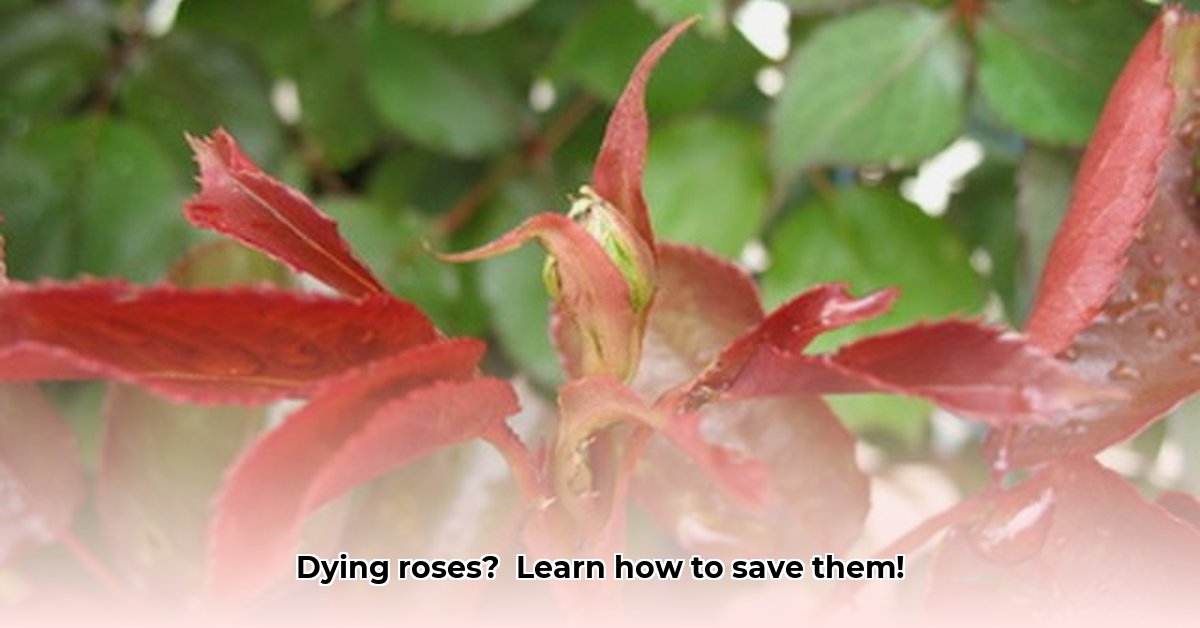Worried about your rose bushes? Seeing spots, holes, or leaves dropping? Don’t panic! This comprehensive guide will walk you through common rose leaf problems, from identifying the cause (fungus, bugs, environmental factors, or even something you’re doing) to effective solutions. We’ll cover everything you need to know to keep your rose bushes healthy and beautiful, with simple, easy-to-follow steps and provide essential rose care tips. Whether you’re a seasoned gardening pro or just starting out, we’ll help you get those leaves looking lush and vibrant again. Let’s get those roses thriving!
Rose Bush Leaves: Your Guide to Lush, Healthy Foliage and Preventing Rose Diseases
Let’s be honest, nobody wants sad, sickly rose bushes. Vibrant, healthy leaves are the key to gorgeous, fragrant blooms. This guide will walk you through common rose leaf problems, showing you how to keep your roses looking their best. From preventing issues to tackling the inevitable problem, we’ll provide all the information about rose care tips that you’re looking for.
Uncovering the Usual Suspects: Identifying Rose Leaf Troubles and Common Pests
Several common culprits can make your rose bushes unhappy. Identifying these problems early is key to restoring your rose’s vitality; here’s how pest identification is crucial for rose health:
-
Black Spot: Imagine tiny black spots appearing on your rose leaves, sometimes starting as purplish dots. That’s black spot, a fungal disease (Diplocarpon rosae). These spots can spread, and in bad cases, cause your rose to lose its leaves completely (defoliation). The good news is, this fungus loves humidity, so improving air circulation is a key part of prevention. Early detection is super important! Look for these spots on the lower leaves first.
-
Powdery Mildew: This one’s easy to spot – a white, powdery coating on the leaves, stems, and even buds. It looks just like someone sprinkled flour on your roses. Powdery mildew (caused by the fungus Sphaerotheca pannosa) blocks sunlight, hindering the plant’s ability to photosynthesize. This can really stunt its growth and distort blooms. Damp conditions and poor air circulation are often to blame.
-
Aphids: These tiny, pear-shaped, sap-sucking insects are like tiny vampires, draining the life out of your rose leaves. They cluster together on new growth, leaving behind a sticky, sweet substance called honeydew. Besides weakening the plant, they can also spread diseases and attract ants. Regularly check your roses for these pests; they are small but easily visible.
-
Rose Slugs (Sawfly Larvae): These aren’t true slugs, but larvae of sawflies. These sneaky larvae munch on your rose leaves, leaving behind a lacy, skeletonized look. A careful inspection will reveal these miniature munchers on the undersides of the leaves. You might just see them slowly chewing away.
-
Japanese Beetles: These metallic green beetles are voracious eaters, often devouring entire leaves, leaving behind a ragged, shredded mess. They are a serious threat to your roses, and often feed in groups. They are most active during warm, sunny days.
-
Rose Rosette Disease: This is a viral disease transmitted by mites. Look for rapid, excessive thorn production (witches’ broom), distorted leaves, and unusually red stems. This disease is fatal and requires immediate action.
The Holistic Approach: Integrated Pest Management (IPM) for Roses and Long-Term Rose Care
IPM isn’t about spraying chemicals willy-nilly. It’s about a balanced approach, a partnership between you, your roses, and nature itself (using natural methods to control pests and diseases). Did you know that IPM strategies can reduce pesticide use by up to 75% while maintaining plant health and promoting sustainable healthy gardening practices?
Prevention is Key: Your First Line of Defense and Soil Health
Implementing preventative strategies is like putting up a strong fence around your rose bushes ensuring disease resistance. Here’s how:
-
Smart Watering: Avoid overhead watering, as it creates a humid environment perfect for fungal diseases. Instead, water deeply at the base of the plant, less frequently, allowing the soil to dry slightly between waterings. Water in the morning to allow foliage to dry during the day.
-
Air Circulation is Your Friend: Provide plenty of space between your rose bushes (at least 2-3 feet) to allow for good air circulation. This reduces humidity and helps deter fungal diseases. Pruning your roses properly also improves airflow. Remove any crossing or inward-growing canes.
-
Clean Up Your Act: Regularly remove fallen leaves and plant debris, as these can harbor diseases and pests. Cleaning your gardening tools after each use with a 10% bleach solution or rubbing alcohol is also crucial to prevent spreading diseases.
-
Choose Wisely: Opt for rose varieties known for their disease resistance. Your local nursery staff is a treasure trove of information on disease-resistant cultivars that thrive in your specific climate and region. They can offer valuable advice tailored to your area. Look for roses labeled as “disease-resistant” or “easy-care.”
-
Healthy Soil: Roses thrive in well-draining soil rich in organic matter. Amend your soil with compost or aged manure to improve its structure and fertility. Conduct a soil test to determine if your soil is lacking any essential nutrients.
When Prevention Isn’t Enough: Targeted Intervention Strategies for Controlling Rose Pests
-
Cultural Controls: The Natural Way: Begin with adjustments to your plant care practices. Proper watering, pruning techniques, and balanced fertilization are your first steps in combatting any issue. These are the foundation of healthy plants.
-
Biological Controls: Nature’s Helpers:
- Neem Oil: An effective organic insecticide, miticide, and fungicide. Use it to control aphids, spider mites, black spot, and powdery mildew. Be sure to follow label instructions.
- Insecticidal Soap: Works well against many soft-bodied insects, like aphids and rose slugs. It’s important to apply it directly to the pests for it to be effective.
- Beneficial Insects: Encourage beneficial insects, like ladybugs, lacewings, and parasitic wasps, that naturally prey on common rose pests. You can attract them by planting companion plants like dill, fennel, and yarrow. Those little guys are your allies.
-
Manual Removal: Hand-pick Japanese beetles and rose slugs and drop them into a bucket of soapy water. This is most effective in the early morning when they are less active.
-
Chemical Controls: The Last Resort: Use fungicides and insecticides only as a last resort, when other methods have proven ineffective. Always follow label instructions carefully, paying close attention to safety precautions and potential environmental impacts. Choose products specifically formulated for roses. Remember, these are powerful tools and should be used judiciously.
Troubleshooting Time: What To Do When Things Go Wrong and Expert Advice
Don’t panic if you spot a problem! Most rose issues are manageable if caught early. Early detection and quick action are often all you need. Never hesitate to reach out to your local agricultural extension office or rose society for expert advice. They are invaluable resources and possess in-depth knowledge to help you diagnose and treat issues. Think of them as your rose doctor!
Weighing Your Options: A Comparison of Control Methods using the best Integrated Pest Management
| Method | Advantages | Disadvantages |
|---|---|---|
| Cultural Controls | Eco-friendly, inexpensive, long-term solution, promotes overall plant health | Might not be enough for severe infestations, requires consistent effort |
| Biological Controls | Environmentally friendly, targets specific pests, reduces reliance on synthetic chemicals | Effectiveness varies depending on the pest and environmental conditions; may require reapplication; attracting beneficial insects takes time and effort |
| Manual Removal | Simple, effective for small infestations, no chemical exposure | Time-consuming, only practical for visible pests, not effective for large infestations |
| Chemical Controls | Fast acting, effective against severe infestations, can provide broad-spectrum control | Potential environmental impact; can harm beneficial insects; overuse can lead to pest resistance; requires careful application and safety precautions; some chemicals may be toxic to humans and pets |
Remember: Lush, healthy rose leaves are within your reach! By following these strategies and combining a proactive approach with considered interventions, you’ll be well on your way to achieving a garden bursting with beautiful, thriving rose bushes.
How to Effectively Use Home Remedies for Common Rose Diseases: Organic Gardening
Key Takeaways:
- Preventative care is crucial for healthy roses using organic methods for rose care. This includes proper watering, pruning, and soil health.
- Many effective organic solutions exist for common rose diseases and pests.
- Integrating various control methods (cultural, biological, chemical, when absolutely necessary) is key.
- Regular monitoring is essential for early detection and timely intervention.
Common Rose Leaf Problems & Organic Solutions: Natural Pest Control
Let’s face it: nobody wants
- Backsplash For Gray Cabinets: Choosing the Right Backsplash Style - December 13, 2025
- Gray And White Backsplash: Ideas For Timeless Style - December 12, 2025
- Gray Kitchen Backsplash Ideas: Find Your Perfect Gray Tile - December 11, 2025









